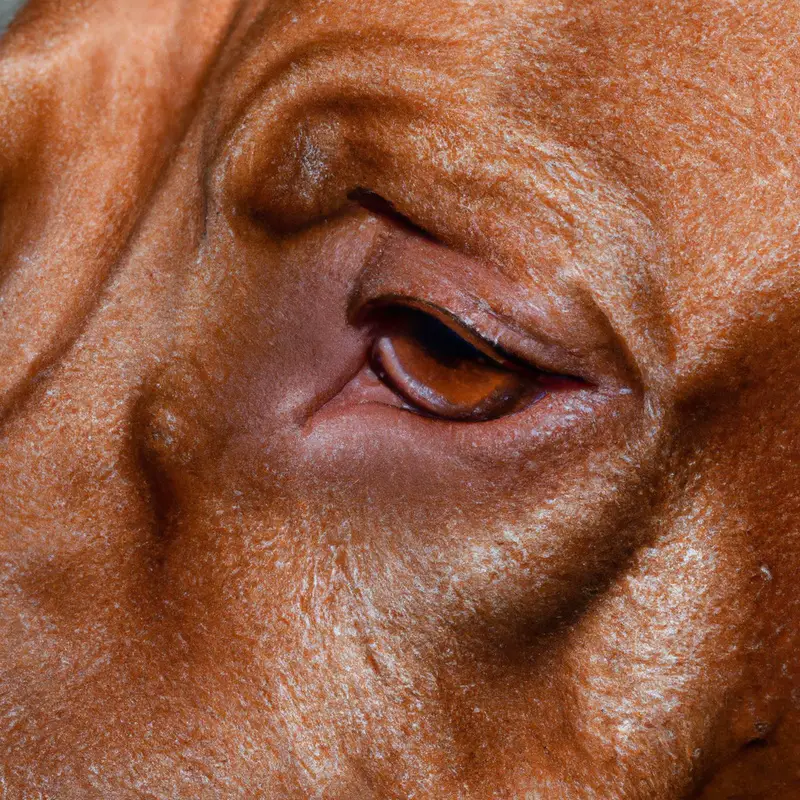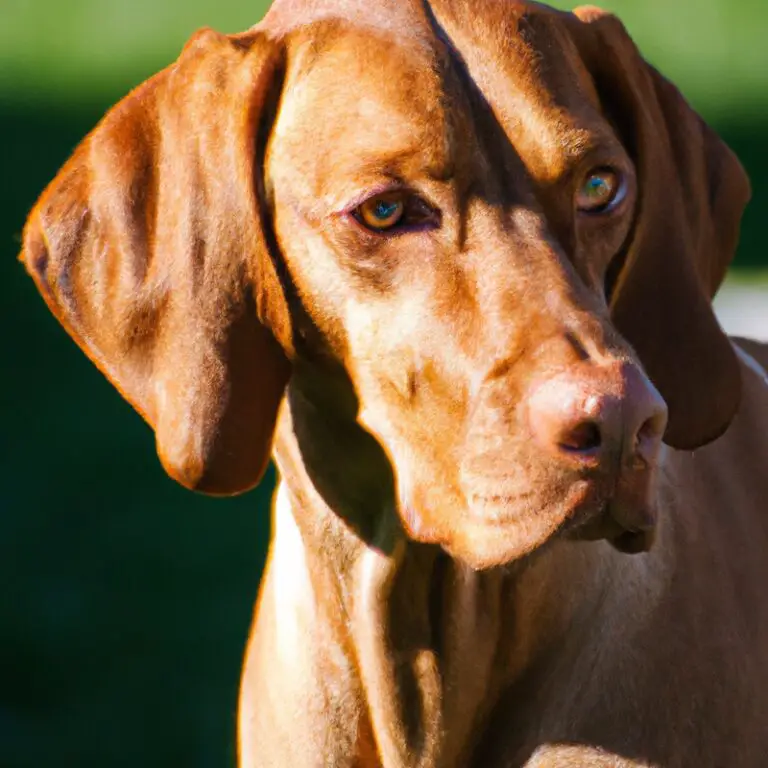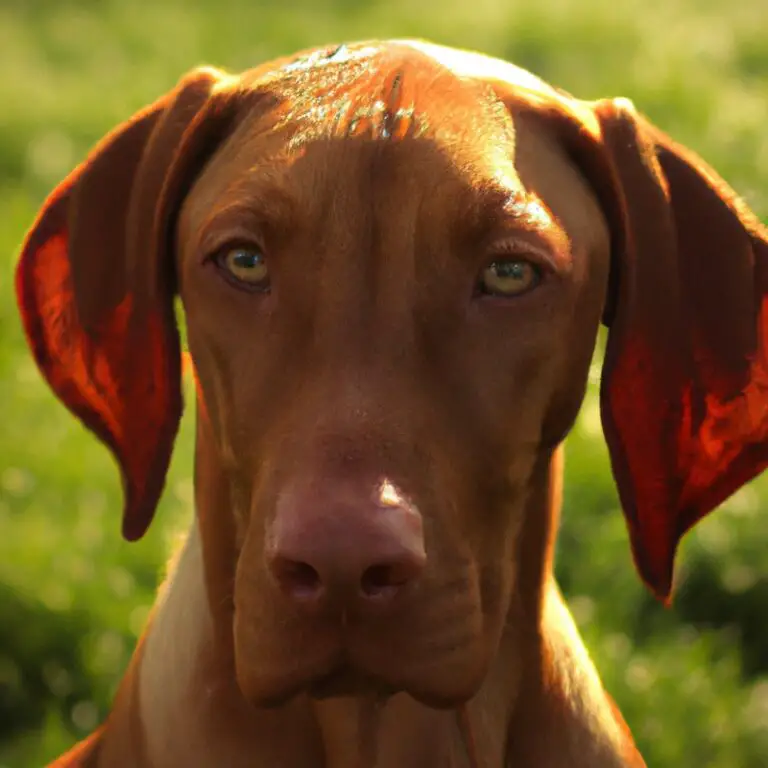What Are Some Common Vizsla Skin Allergies And How To Alleviate Their Symptoms?
Key Takeaways:
- Vizslas are prone to common skin allergies including atopic dermatitis and food allergies.
- Symptoms of Vizsla skin allergies can include itching, redness, rashes, and hair loss.
- Alleviating Vizsla skin allergies involves identifying triggers, using hypoallergenic products, and working with a veterinarian.
- Proper grooming, a balanced diet, and regular veterinary check-ups can help prevent and manage skin allergies in Vizslas.
Are you a proud Vizsla owner, but worried about your furry friend’s skin allergies?
Don’t fret! I’m here to guide you through the world of common Vizsla skin allergies and how to alleviate their symptoms.
From flea allergy dermatitis to contact dermatitis, we’ll explore the culprits triggering your Vizsla’s discomfort.
But it doesn’t end there – we’ll also discuss the signs and symptoms of these allergies, and most importantly, effective ways to manage and provide relief.
So, grab a cup of coffee and get ready to become an expert in Vizsla skin allergies!
| Vizsla Skin Allergies | Symptoms | Treatment |
|---|---|---|
| Contact Allergies | – Redness or irritation at the contact site – Itchy skin – Hives or rash | – Identify and avoid the allergen – Topical corticosteroids – Antihistamines for itch relief |
| Flea Allergy Dermatitis | – Severe itching – Red, inflamed skin – Hair loss – Sores or scabs | – Flea prevention products – Treat the affected pet and environment – Anti-itch medications – Steroids for severe cases |
| Food Allergies | – Itching and scratching – Chronic ear infections – Frequent bowel movements or diarrhea | – Elimination diet to identify the trigger food – Feeding hypoallergenic dog food – Allergy medications as needed |
| Atopic Dermatitis | – Severe itching – Red, inflamed skin – Excessive licking or biting – Ear infections | – Allergy testing to identify triggers – Allergen avoidance: – Regular bathing with a hypoallergenic shampoo – Keep the environment clean – Immunotherapy (allergy shots) – Symptom relief with medications |
Common Vizsla skin allergies
Allergy #1: Flea allergy dermatitis
Flea allergy dermatitis is a common skin allergy among Vizslas. It occurs when a Vizsla is allergic to the saliva of fleas.
Even just one flea bite can cause severe itching and irritation.
To alleviate the symptoms, it’s important to regularly check your dog for fleas and use preventive measures. Bathing your Vizsla with a flea shampoo can help kill any fleas on their body.
Additionally, using flea control products recommended by your veterinarian can prevent flea infestation.
Allergy #2: Atopic dermatitis
Atopic dermatitis is a common skin allergy in Vizslas.
It causes itchiness, redness, and irritation.
To alleviate symptoms, you can try:
- Using hypoallergenic shampoos and soaps that are gentle on their skin.
- Keeping their environment clean and free of allergens like dust mites.
- Avoiding potential triggers like certain foods or environmental irritants.
- Providing regular baths to moisturize their skin.
- Seeking veterinary advice for appropriate medications or allergy shots.
Remember, always consult with a veterinarian for the best course of action!
Allergy #3: Food allergies
Food allergies can be a common concern for Vizslas. Symptoms include itching, redness, rashes, vomiting, or diarrhea.
To determine the specific food allergen, you might consider an elimination diet, removing potential triggers one by one.
Opt for limited ingredient diets that contain novel protein sources or hydrolyzed proteins. Additionally, you may consult a veterinarian for guidance and advice on hypoallergenic diets or specialized testing.
Be sure to carefully read food labels and avoid ingredients that have caused previous allergic reactions.
Remember to consult a professional before making any dietary changes for your Vizsla.
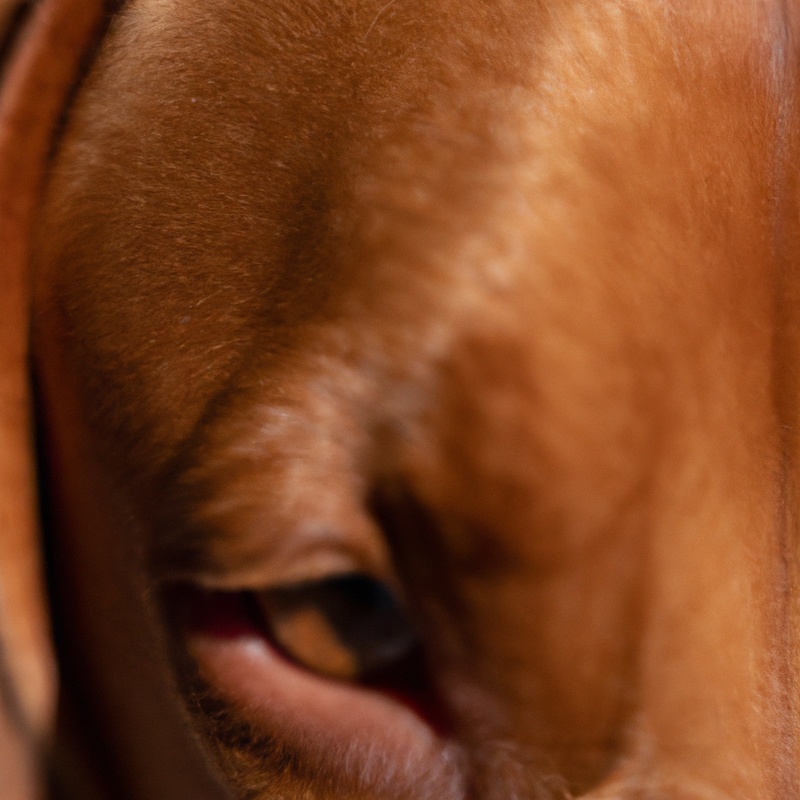
Allergy #4: Contact dermatitis
Contact dermatitis is a common skin allergy among Vizslas that occurs when their skin comes into direct contact with certain substances.
This can include allergens like chemicals, fabrics, cleaning products, or even plants.
Symptoms may include redness, swelling, itching, and even blisters.
To alleviate these symptoms, it is important to identify and avoid the irritant.
This may require making changes to your Vizsla’s environment, such as using hypoallergenic products or keeping them away from known allergens.
Regularly bathing and grooming your Vizsla can also help manage contact dermatitis.
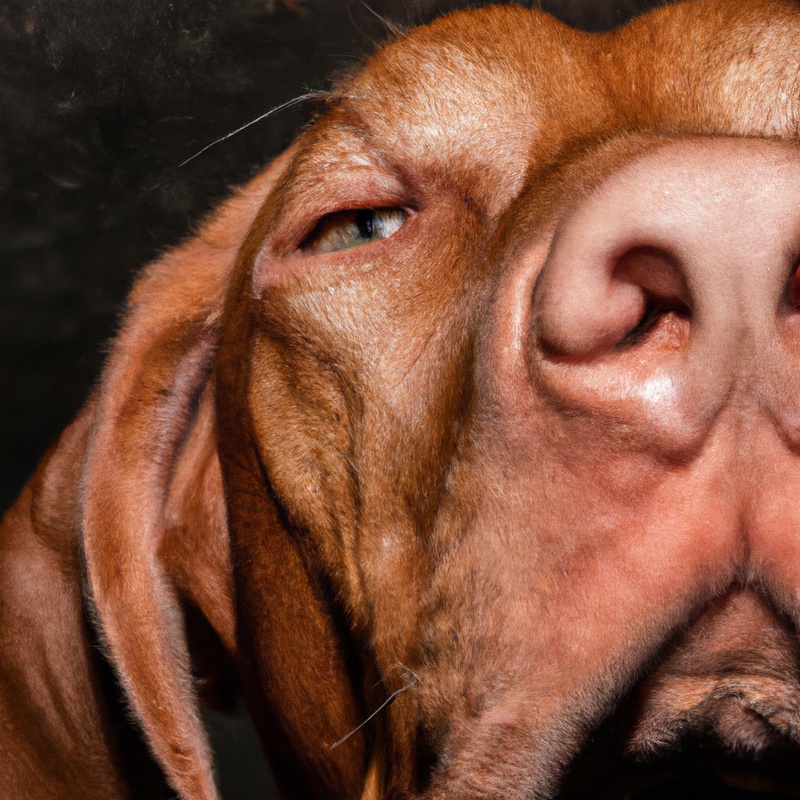
Symptoms of Vizsla skin allergies
Itchy and inflamed skin
Itchy and inflamed skin can occur in Vizslas due to various reasons. Allergies, such as food allergies or environmental allergens, can be a common cause.
Other possible reasons include parasites, bacterial or fungal infections, or even dry skin.
To alleviate these symptoms, it is essential to identify the underlying cause. Regular grooming, using hypoallergenic products, providing a balanced diet, and consulting with a veterinarian can help address the issue.
Keeping your Vizsla’s skin clean and moisturized is crucial for their overall comfort and well-being.
Hair loss and bald patches
Hair loss and bald patches are common issues seen in Vizslas with skin allergies. These conditions can be caused by a variety of factors, including environmental allergens, food allergies, or even flea infestations.
It is essential to identify the underlying cause of the hair loss and work with your veterinarian to develop a treatment plan.
This may include medication, dietary changes, or the use of hypoallergenic grooming products. Regular bathing and grooming can help to alleviate itching and prevent further hair loss.
Redness and rash
Redness and rash are common symptoms of skin allergies in Vizslas. This can be due to various factors such as contact with allergens, food sensitivities, or genetic predispositions.
The affected areas may appear inflamed, itchy, and irritated.
To alleviate these symptoms, it is essential to identify and avoid potential triggers, such as certain foods or environmental allergens. Regular bathing with hypoallergenic shampoo and the use of soothing creams or ointments recommended by your veterinarian can also provide relief.
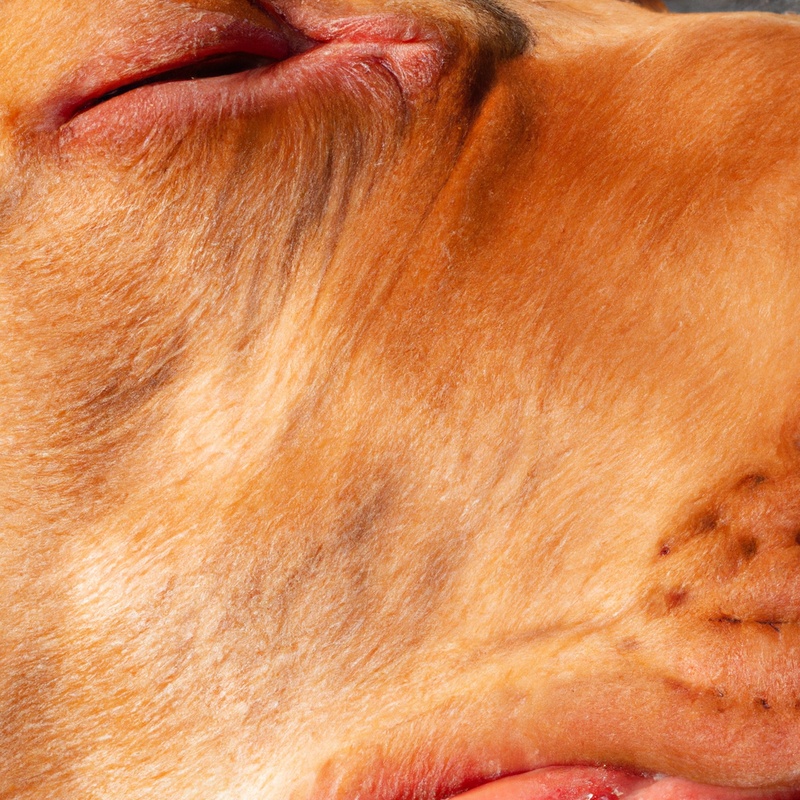
Excessive licking or chewing
Excessive licking or chewing is a common symptom of skin allergies in Vizslas.
It can indicate irritation, itching, or pain.
To alleviate this, it’s important to identify the underlying cause.
Allergies might be triggered by food, environmental factors, or parasites.
Regular grooming, using hypoallergenic products, and maintaining a clean living environment can help.
Consult with a veterinarian to determine the best course of action and provide relief for your furry friend.
Alleviating and managing Vizsla skin allergy symptoms
Visit a veterinarian for diagnosis and treatment
If your Vizsla is experiencing skin allergy symptoms, it is important to seek professional help from a veterinarian.
A veterinarian will be able to accurately diagnose the specific allergies your Vizsla may have and provide a tailored treatment plan.
They may recommend medication, specialized diets, or other therapies to alleviate your Vizsla’s symptoms.
Remember, only a veterinarian can provide the appropriate diagnosis and treatment for your Vizsla’s skin allergies.
Flea prevention and control
Flea prevention and control is essential for the health of your Vizsla.
Here are a few tips to help you keep those pesky critters away:
- Use a veterinarian-approved flea prevention product. These come in the form of topical treatments, oral medications, or collars.
- Regularly groom and bathe your Vizsla to help remove any fleas or eggs.
- Vacuum your home frequently, paying special attention to areas where your dog spends a lot of time.
- Wash your dog’s bedding and any soft furnishings regularly to get rid of any fleas or eggs.
- Keep your yard clean and tidy, as fleas can live in tall grass and shady areas.
By being proactive and taking these preventive measures, you can ensure a flea-free and happy Vizsla.
Identifying and avoiding food allergens
Identifying and avoiding food allergens is essential to manage Vizsla skin allergies.
Start by eliminating common allergenic ingredients like beef, chicken, dairy, wheat, and soy from your dog’s diet.
Gradually reintroduce one ingredient at a time to see if any cause a reaction.
Keep a food diary to track symptoms and identify triggers.
Consider a hypoallergenic or novel protein diet if allergies persist.
Consult with your vet for proper guidance on managing your Vizsla’s food allergies.
Minimizing exposure to potential irritants
To minimize exposure to potential irritants for your Vizsla, there are a few simple steps you can take. Firstly, be mindful of their environment and try to keep it clean and free from dust, mold, and allergens.
Regularly vacuuming and dusting surfaces can help reduce the presence of irritants.
Secondly, consider using hypoallergenic bedding and washing it regularly to keep it clean. Thirdly, avoid using harsh chemicals or scented products around your Vizsla, as these can be irritants.
Finally, make sure to keep an eye on your Vizsla’s diet, as certain ingredients can trigger allergic reactions.
Regular grooming and maintenance
Regular grooming and maintenance are essential for managing Vizsla skin allergies. Brushing your Vizsla’s coat regularly helps to remove any allergens or irritants, keeping their skin clean and healthy.
Be sure to use a gentle brush or comb to avoid causing any discomfort.
Additionally, regularly inspecting your Vizsla’s skin for any signs of redness, rashes, or irritation is crucial. If you notice any issues, consult your veterinarian for proper treatment and care.
Finally, bathing your Vizsla with a hypoallergenic shampoo can also help alleviate skin allergy symptoms.
Using hypoallergenic products
Using hypoallergenic products can be beneficial for managing Vizsla skin allergies.
These products are specifically designed to minimize allergic reactions, as they are made with gentle and less irritating ingredients.
By using hypoallergenic shampoos, conditioners, and skincare items, you can help alleviate your Vizsla’s skin allergy symptoms and reduce discomfort.
Additionally, hypoallergenic bedding and collars can also contribute to a healthier and happier Vizsla.
Just make sure to check the labels for any potential allergens and choose products that are specifically formulated for sensitive skin.
Considering allergy shots or medication
Considering allergy shots or medication is a possible solution for managing Vizsla skin allergies. Allergy shots, also known as immunotherapy, can help desensitize your Vizsla’s immune system to specific allergens.
This can reduce the severity of their allergic reactions over time.
Medications, such as antihistamines or steroids, can provide relief from symptoms like itching and inflammation. Consulting with a veterinarian is essential to determine the best course of action for your Vizsla’s specific allergies.
Frequently Asked Questions (FAQs)
Can Vizslas outgrow their allergies?
Yes, Vizslas can outgrow their allergies. Vizslas, like other dogs, may experience allergies as puppies, but these allergies can sometimes lessen or disappear as they mature.
However, not all Vizslas will outgrow their allergies, and the severity of the allergies can vary.
It’s important to work with your veterinarian to manage your Vizsla’s allergies and provide them with relief from symptoms. Regular check-ups and discussions with your vet will help ensure your Vizsla’s allergies are properly managed.
Are Vizslas more prone to skin allergies compared to other breeds?
Vizslas are not necessarily more prone to skin allergies compared to other breeds.
However, they do have sensitive skin and can be more susceptible to certain allergens and irritants.
Factors like genetics, environment, and diet can also play a role in the development of skin allergies.
It’s important to monitor their skin health, provide a proper diet, and seek veterinary advice if any allergies or irritations arise.
Regular grooming and using gentle, hypoallergenic products can also help alleviate and prevent skin issues.
Can Vizsla skin allergies be cured completely?
Vizsla skin allergies cannot be cured completely, but their symptoms can be alleviated through various treatments and management strategies. It’s important to work closely with your veterinarian to develop a plan that best suits your Vizsla’s specific needs.
This may involve allergy testing, identifying and avoiding triggers, managing their environment, and using medications or supplements to provide relief.
Remember, while a complete cure may not be possible, with proper care and management, you can help your Vizsla live a comfortable and happy life.
Can Vizsla skin allergies be hereditary?
Yes, Vizsla skin allergies can be hereditary. Just like humans, dogs can inherit certain traits and conditions from their parents, including allergies.
This means that if a Vizsla has allergies, there is a higher chance that their offspring may also develop allergies.
It is important to be aware of this possibility when considering breeding Vizslas or adopting a Vizsla from a breeder. Taking preventive measures and providing appropriate care can help alleviate symptoms and improve the quality of life for Vizslas with allergies.
Final Verdict
As an expert on Vizsla skin allergies, I’ve outlined the most common types of allergies that affect these dogs and provided strategies to alleviate their symptoms.
Flea allergy dermatitis, atopic dermatitis, food allergies, and contact dermatitis can all cause itchy, inflamed skin, hair loss, redness, and excessive licking or chewing.
To manage these symptoms, it is crucial to visit a veterinarian for accurate diagnosis and appropriate treatment.
Additionally, preventing fleas, identifying and avoiding food allergens, minimizing exposure to irritants, regular grooming, hypoallergenic products, and considering allergy shots or medication can all contribute to a healthier and more comfortable Vizsla.
Remember, a proactive approach and proper care can make a significant difference in managing Vizsla skin allergies.

